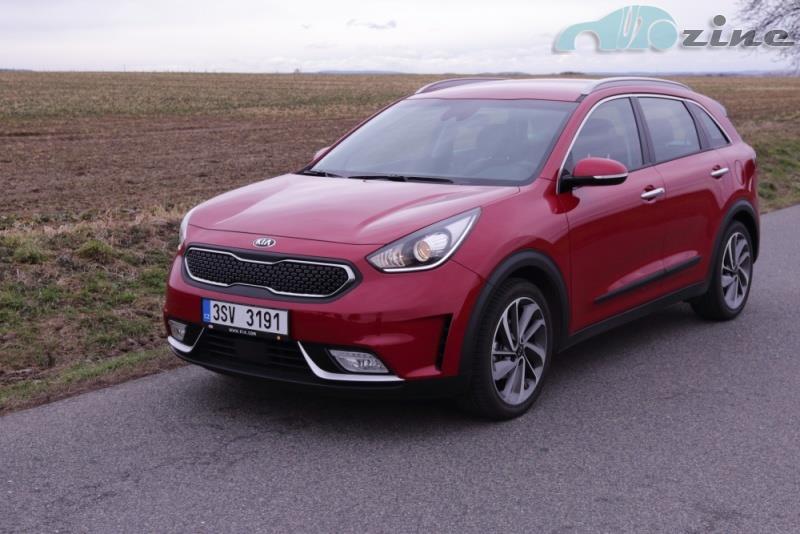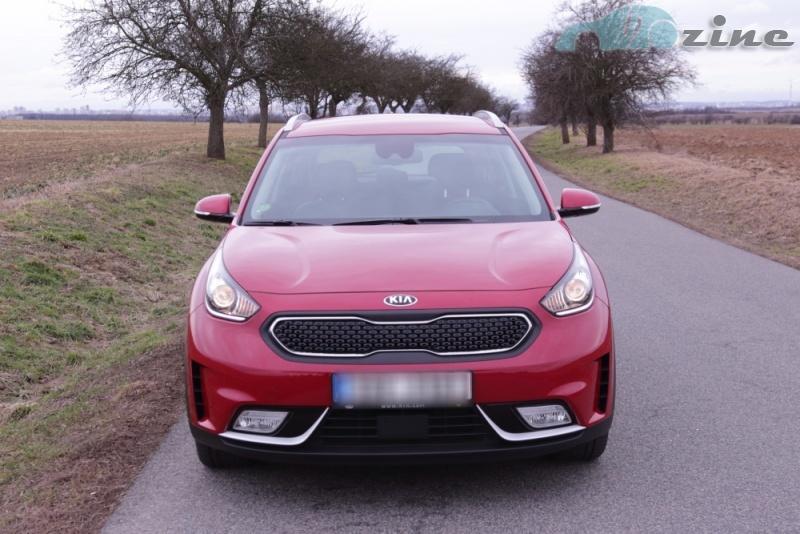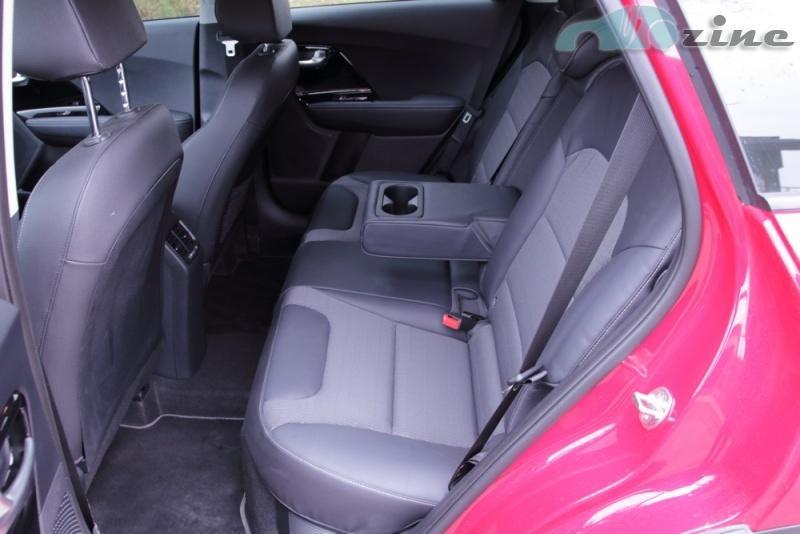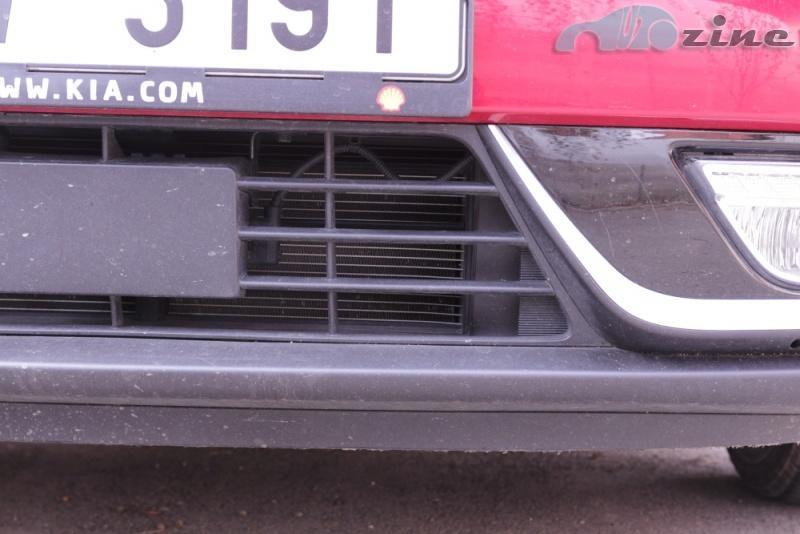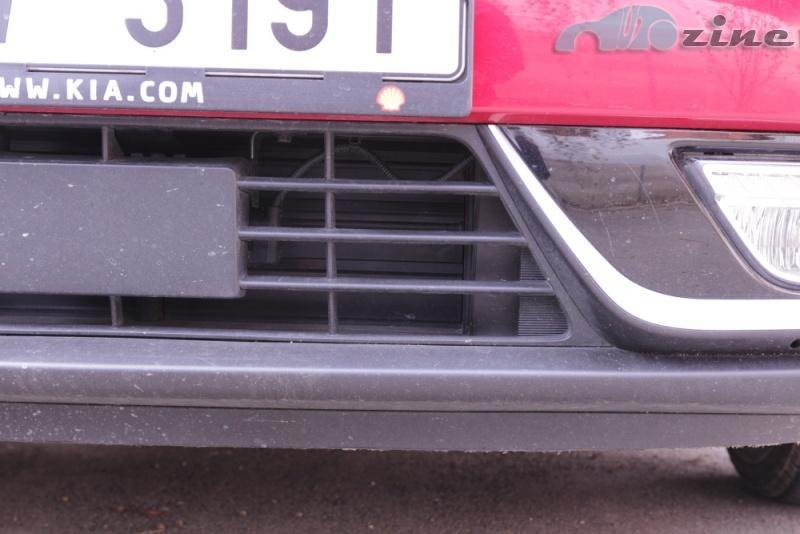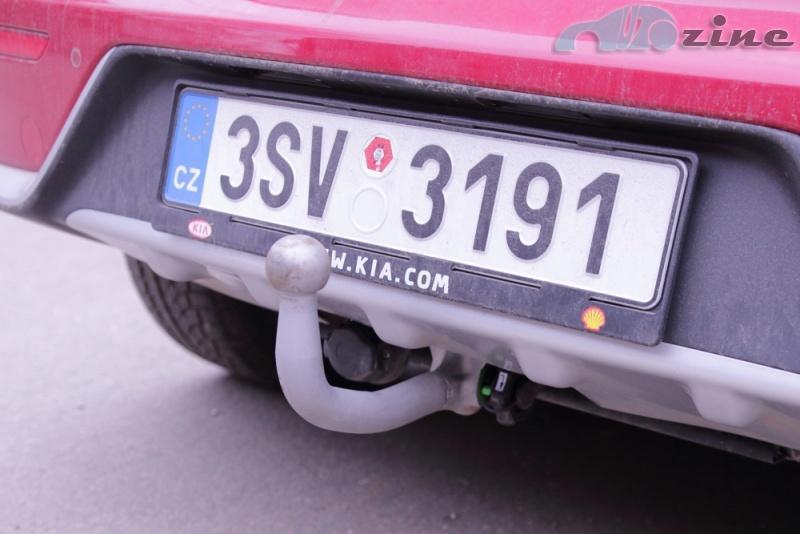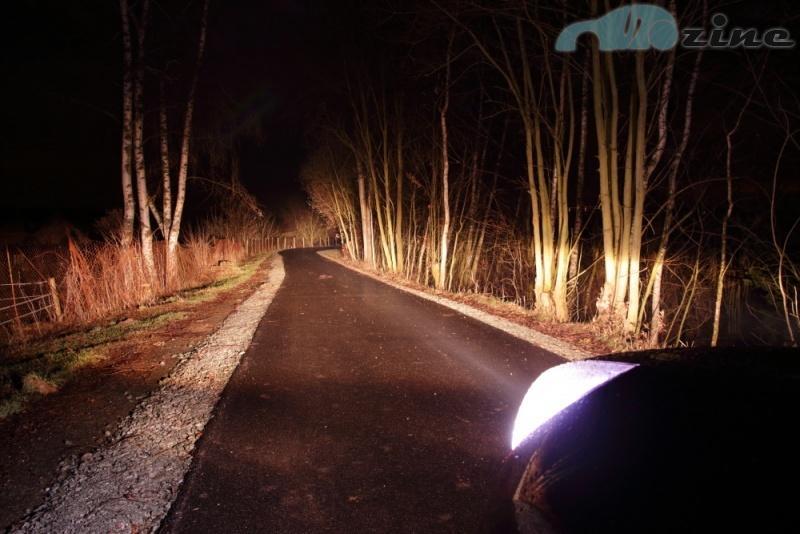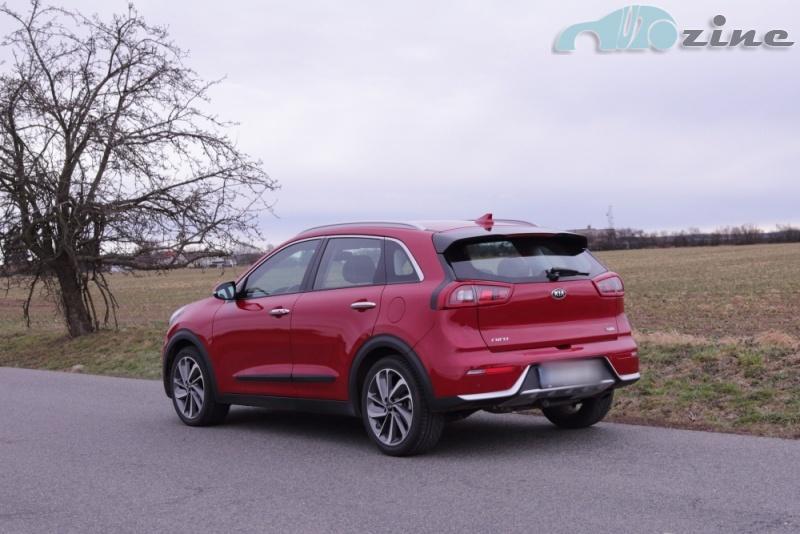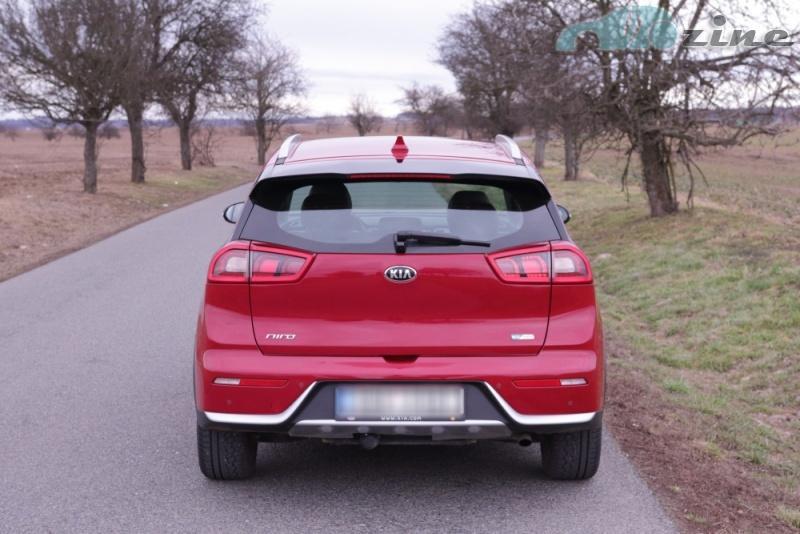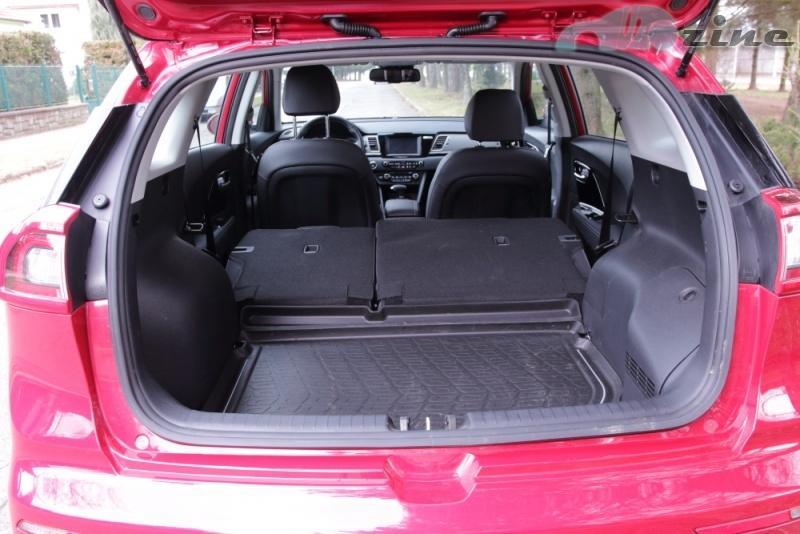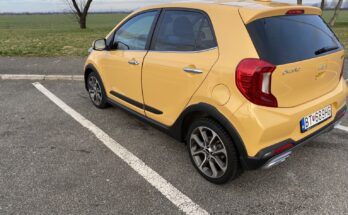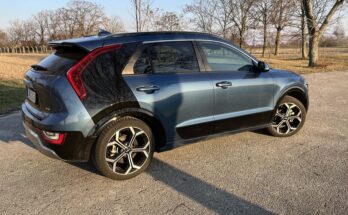The Kia Niro is a hybrid crossover, using a new platform for hybrids that it shares with the Hyundai Ioniq . A combination of a 1.6 petrol and an electric motor takes care of the drive, can it compete with diesels in terms of driving characteristics and fuel consumption?
Exterior

At first glance, the Kia Niro looks much sleeker than most Asian cars. Niro is adapted to economical driving, with an aluminum hood and fifth door , 11 kg have been saved. The drag coefficient Cd is 0.29 . That's a very good value for a crossover. For example, there is an active air curtain behind the rather small intake opening, which is further reduced by the active cruise control radar. When there is no need to air-cool the motor, it closes and improves airflow. Intake holes on the sides of the bumper and covering a large part of the chassis also serve to improve air flow. At the rear, efforts to improve aerodynamics are most visible. The spoiler improves the stability of the car at higher speeds, and the diffuser, in addition to stability, also improves air circulation. On this particular car, the diffuser is modified due to the towbar, which is homologated for 1300 kg.
Interior

The interior is very similar to other Kia cars, there are comfortable semi-leather seats and a great steering wheel, both heated. The parking brake solution, which is controlled by four pedals, is different. At a closer look you will notice the differences of the hybrid drive, there are two "fuel gauges" one shows the fuel in the tank, the other the energy in the battery. Instead of a classic tachometer, you'll find a driving style indicator here. Between the alarm clocks there is a color 4.2″ display, where, in addition to the usual things, the energy flow can also be displayed, thanks to which you have an idea of what is happening under the hood. Ecology was also considered when choosing materials, the upper part of the dashboard is made of biocomposite reinforced with sugar cane fibers. The infotainment display has a 7" diagonal and offers more detailed driving statistics in addition to functions such as navigation and connection to the phone. The touchscreen is complemented by mechanical buttons that make operation easier and faster. Below them are the air conditioning controls. The driver only function is interesting, which makes it possible to air-condition only the driver's compartment and thereby save energy. Below are all the inputs and outputs: a pair of car sockets, AUX, one USB and inductive phone charging.
There is plenty of space on the rear seats, both above the head and in front of the knees, mainly thanks to the 2700 mm wheelbase.

The luggage compartment has a basic volume of 427 liters, under which only the range kit and mandatory equipment is placed. There is also a classic 12 V car battery in the luggage compartment. After folding down the seats, it is possible to create a space with a volume of 1425 liters.
Drive and ride
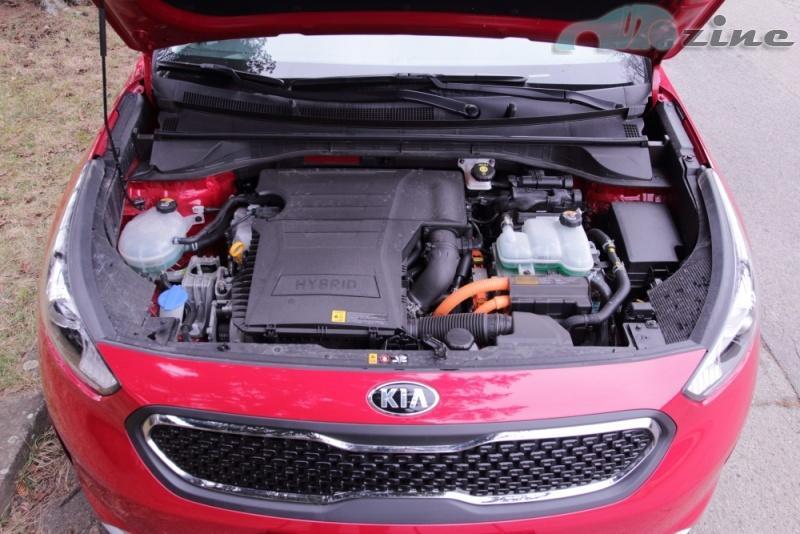
The overall drive system has a maximum output of 104 kW at 5700 and a torque of 265 Nm from 1000 to 2400 rpm. The naturally aspirated 1.6 has an output of 77 kW at 5,700 rpm and a torque of 147 Nm peaking at 4,000 rpm. The engine works in the atkinson cycle, thanks to which it reaches up to 40% efficiency. A conventional gasoline engine operates with approximately 25% and a diesel engine with 35% efficiency. Synchronous electric motor with permanent magnets reaches a power of 32 kW in the range of 1798 to 2500 revolutions. The maximum torque of 170 Nm is available from zero revolutions to 1790 revolutions per minute. The efficiency of the motor is 95% (however, energy is also converted into heat in the battery and frequency converter, not only during consumption but also during recuperation). The Li-pol battery weighing 33 kg has a capacity of 1.56 kWh and is located under the rear seats. Thanks to its low internal resistance, it is able to regenerate even during sharp deceleration, and the disc brakes only come into play during very hard braking. During the drive, the battery was usually charged to half to three quarters of its capacity. Unfortunately, it is not possible to choose to drive purely on electricity, the car chooses the drive combination itself. The internal combustion engine is connected smoothly, during normal driving with the radio on, only subtle vibrations in the gas pedal will let you know that the engine is starting. The six-speed dual-clutch transmission shifts smoothly, in 6th gear at a speed of 130 km/h, the engine turns 2650 revolutions. It has Eco and Sport modes with the possibility of manual gear shifting, in Sport mode the steering is also a little stiffer and the gas pedal is more sensitive. The tabular combined consumption is 4.4 liters for the version with 18″ wheels (yes, the consumption is even 0.6 liters lower with 16″ wheels). When trying to drive economically, it could be reached comfortably, during brisk driving it was between 5 and 6 liters. The chassis has a McPherson front suspension and a multi-element rear suspension. Even with 225/45 R18 wheels, it can cope well with bumps and has enough traction. Driving assistants include an excellently functioning adaptive cruise control and active lane keeping, which does not yet work completely reliably. There is also an automatic emergency braking system.

Conclusion
Environmental limits are becoming more and more strict and many cities are considering or have already banned the operation of older diesel cars. Kia Niro proved to be a very capable hybrid, the level of fuel consumption is kept at a low level. It offers a lot of space for the crew not only in the front but also in the back. Many will certainly appreciate the possibility of mounting a towing device. A plug-in version with an 8.9 kWh battery and a range of 55 kilometers should also arrive by the end of 2017. For now, there is only one engine and two levels of equipment available. Comfor with an introductory price of CZK 599,980 and Exclusive for CZK 669,980. In the higher equipment, the only possible surcharge is CZK 15,000 per varnish.
Advantages:
+ low consumption
+ dual-clutch transmission
+ price/use value ratio
Disadvantages:
– the impossibility of choosing operation purely on electricity
– higher noise from wheels
Price from: 599,980 CZK
Price of the tested car: CZK 669,980 + CZK 15,000 for paint + x thousand for towing equipment

